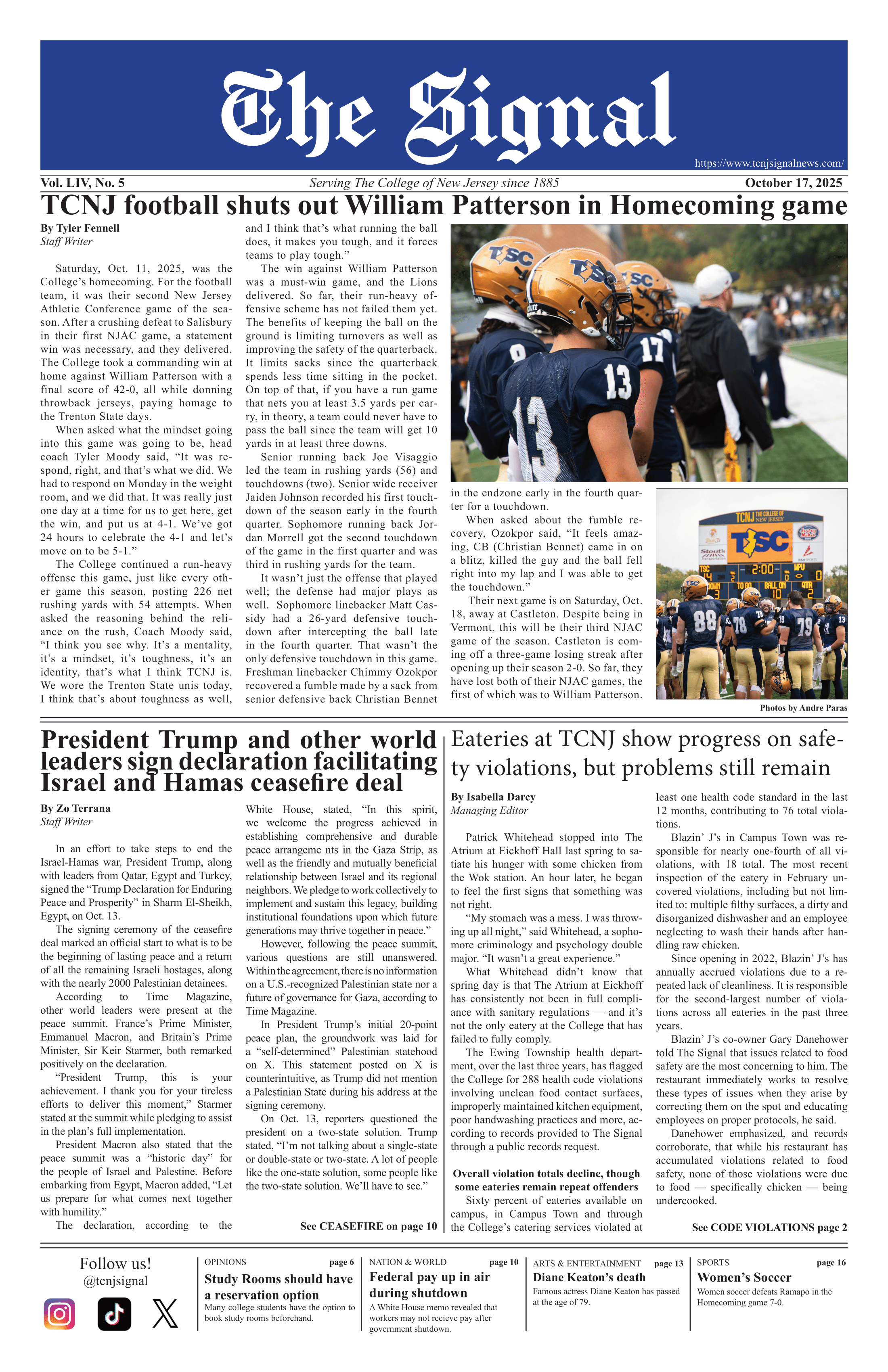Friends and family gathered together on Sept. 23 to remember Daniel Tomasic, a junior engineering major who took his own life last May. The service did its best to capture a life well-lived, a life cut short by the second leading cause of death among college students.
Over the past five years, college suicide has gained national attention. The 2003-2004 school year saw six suicides at New York University (NYU) alone. The media circus that followed, including a front-page New York Post picture of one victim falling to her death, brought the issue of college suicide into the national spotlight.
While NYU is only an hour from the College's campus, it seems like a different world. The fast-paced urban school is routinely depicted as a university where students face tremendous pressure to excel. Students reacting to the 2003 deaths were quoted in local newspapers saying that the academics were too much for some students to handle.
As the admissions requirements and academic environment at the College have become more rigorous, the incidences of depressive thoughts and behavior also have increased. While there is no evidence that these two factors are directly related, or that they were related to Tomasic's suicide, the pressures associated with college are often discussed and treated at the office of Psychological Services.
"People are used to coming here and being the valedictorian, and when they get a C, that can be a major factor," Larry Gage, associate director for counseling at the office of Psychological Counseling Services, said. "As people who are unaccustomed to failure, or what they perceive as failure, they are looking for a way to cope."
A suicidal act may be one of the coping mechanisms college students employ to deal with external pressures. But while students who are depressed or suicidal may see death as their only escape, Gage is quick to point out the finality of suicide.
"It is a permanent solution to a temporary problem," Gage said. "If you look at survivors of suicide, almost (everyone regrets) doing it. That's why it is important to get to people before the action."
As Tomasic's loved ones struggled to deal with his sudden death last May, the College prepared for exam week. Since the timing of his death left no opportunity for a memorial service before summer break, the College chose to delay it until this semester. The service, held in Allen Drawing Room, drew a crowd of students, faculty and family members still struggling to understand such a tragic death.
Though the service focused on Tomasic's life rather than his death, the impact of his passing was clear in the faces of those in attendance. And with his death, the phenomenon that has floated on the periphery of our community for so long has finally hit home.
According to Gage, Tomasic's suicide was the first student suicide the College has seen in over 10 years.
The suicide rate at the College is lower than the national average for college students, which is one in 10,000. While the number seems small, Gage wants students to take the warning signs of suicide, including depressive behavior, talking about suicide and loss of interest in activities, seriously.
"If you are concerned about a person, when in doubt, consult," Gage said. The office of Psychological Counseling Services has services not only for students who are considering suicide themselves, but also for friends who do not know how to approach the issue.
Some discomfort surrounding the issue of suicide may be the result of misinformation.
"One of the myths is if you bring up suicide with somebody, it will make them more likely to do it," Gage said. On the contrary, he said, discussing the issue with a suicidal person lowers their risk of following through. "People are generally grateful for the opportunity to talk," he said.
A 2003 article from the University of Michigan Health System states that 15 percent of college students suffer from depression.
According to the article, as many as 10 percent arrive on campus with a history of mental illness. With the stigma surrounding suicide and mental illness, it is not surprising that the issue has slightly faded from public discourse after the rash of NYU suicides ended.
Although the issue of mental health on college campuses is something that needs to be taken seriously, enhancing the public discourse on suicide is not meant to be alarming. The suicide rate for college students is lower than the rate within the 18-24 age group at large.
However, since the '70s, the suicide rate among college females has more than doubled, and the rate among males has tripled. With such statistics showing no sign of waning, what should students do?
The answer seems to be in a more open dialogue about suicide. Discussing the thoughts and feelings that lead members of our community to take their own lives could be the acts that save them.
"There are a lot of resources and a lot of people that care deeply about the well-being of students," Gage said. "Positive responses to people who are suicidal will go a long way to making sure we aren't in this territory again."






